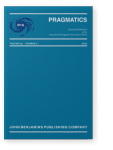Vol. 32:2 (2022) ► pp.191–217
Tradition, modernity, and Chinese masculinity
The multimodal construction of ideal manhood in a reality dating show
This article examines the multimodal construction of ideal manhood in male participants’ self-introduction videos in a Chinese reality dating show. A framework is developed to model identity as evaluative attributes and to explicate how they are constructed through linguistic and visual resources. Analysis of 91 videos shows two versions of idealized Chinese masculinity, namely, modern masculinity (mainly embodied by participants who have won a date), and traditional masculinity (mainly embodied by participants who have not won a date). Modern masculinity highlights career-oriented qualities, socio-economic status, and luxurious lifestyles, while traditional masculinity highlights family values, skills in Chinese cultural heritage, and class mobility. The findings provide new understandings of the complexity of Chinese masculinity in the dating show context, which reflects the influence of capitalist globalization on the one hand, and the government’s attempt to govern public conduct and morality on the other.
Article outline
- 1.Introduction
- 2.Background
- 2.1Gender identity and masculinity
- 2.2Discourse studies on gender identity
- 2.3Reality dating shows
- 2.4If You Are the One
- 3.Data and analytical framework
- 4.Results
- 4.1Overall distribution of identity categories
- 4.2Inner qualities
- 4.3Capability
- 4.4Socioeconomic status
- 5.Discussion and conclusion
- Notes
-
References
